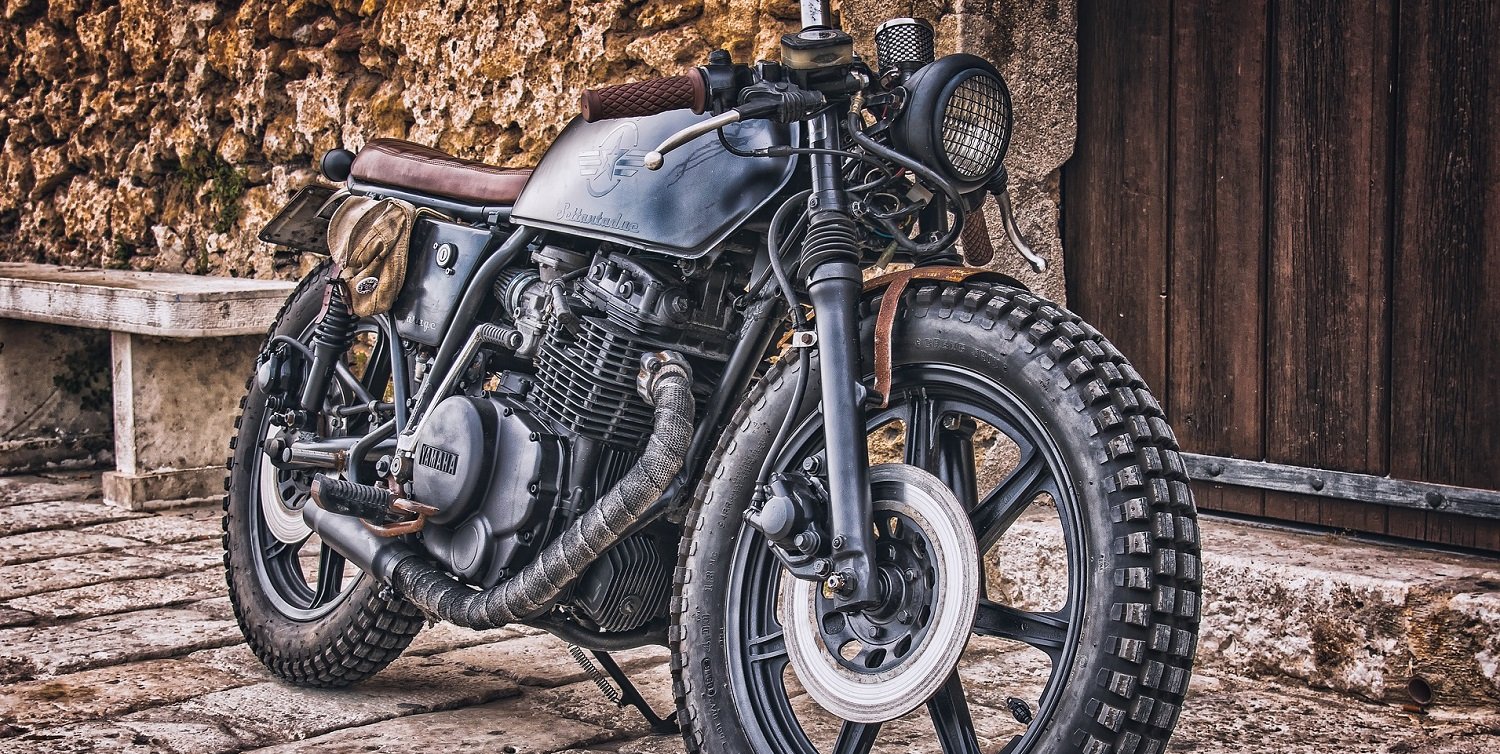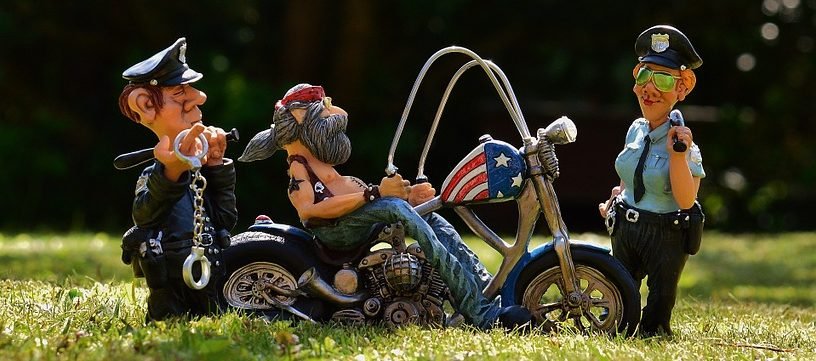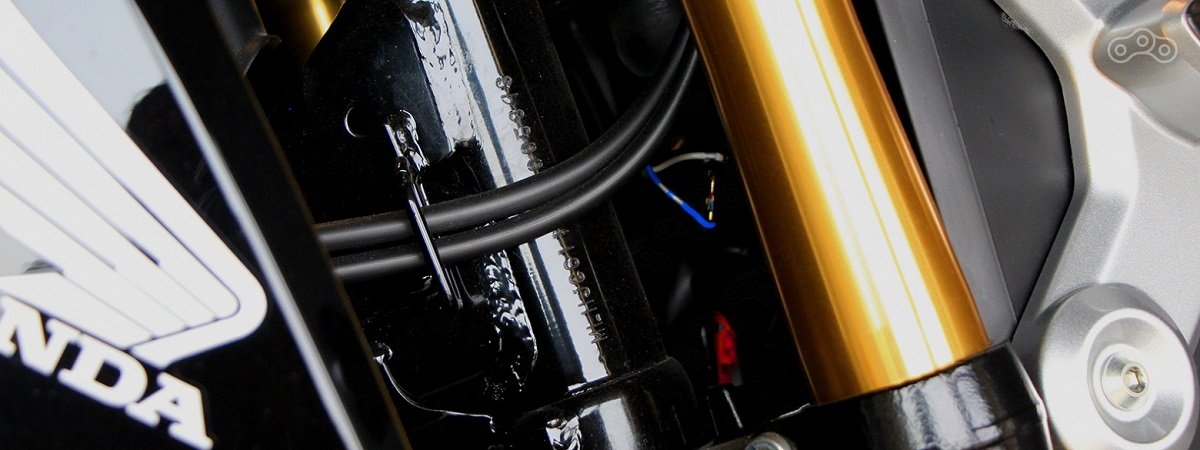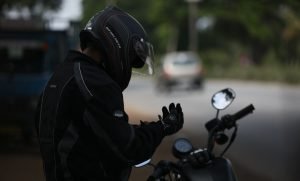How to check if a motorcycle engine is stolen
Updated on | By Mohit Chauhan

Choosing a used motorcycle from the aftermarket is more difficult than buying a brand new one. Reviewing all the offers made by sellers and choosing between multiple options, takes a lot of time. But the important thing to be mindful about while buying a used motorcycle is that it may have a history which the seller will never disclose. In today’s blog we will learn about prerequisite checks that needs to be taken care of to make sure that the motorcycle engine has not been stolen. So, let’s get started.
Why do we need to verify a motorcycle before purchase?
Buying any used vehicle is risky and a motorcycle is no exception. Lately, it is getting stolen as often as cars, and in some regions even more often than cars, so the probability of purchasing a stolen motorcycle is considerably high these days.
To protect yourself from unpleasant situations of this kind, you need to carefully check the vehicle before making a deal.

When you cross verify the details provided by the seller, you can come across information not just related to theft, but a lot of other useful information as well. For instance, the date and place of production (while selling, most often the seller distorts this information in order to increase the price).
Also, there is a high chance that the seller might not be the first owner of the bike, as he is claiming to be, or there might be some legal procedures currently going on against the vehicle which will automatically pass on to you. So, it is best to verify the details provided by the seller.
Motorcycle engine verification methods
There are several methods to check if the motorcycle is stolen. The most reliable way is to contact the traffic police in person. Here it should be noted that there is a small snag: in order to provide information, an employee of the State Traffic Inspectorate will require documents confirming the ownership of the motorcycle (sale and purchase agreement) or the personal presence of the vehicle owner (and not all sellers will want to spend their time on bureaucratic fuss).
Another option is to ask for the service of a patrol inspector. If you have a tablet or other device with Internet access, this procedure will not cause difficulties for him. But it should be understood that such “requests” are not the responsibility of the police department and the refusal to help is quite likely.
A much faster way to find out all the ins and outs about the vehicle is to check online databases on the Internet. On the official portal of the traffic police, a corresponding section has been created, where the verification of vehicles is available. It should be remembered that the database is not updated very quickly, and if the motorcycle was stolen quite recently, then it is possible that the information might not be there.
Similar service is offered by many other portals, however, it is not free of charge and a 100% result is also not guaranteed. An example of such site is VINCheck.
How to check if a motorcycle engine is stolen?
There are several proven ways to verify the VIN or frame number. You can use any of them:
- Contacting the traffic police: The safest way to get the latest data. But there is a huge disadvantage – the personal presence of the motorcycle owner. Not every seller wants to get bothered, and it makes no sense to contact the police after the purchase;
- Contact the patrol inspector: In most cases, they have tablets with them that connect to the official database via the Internet. But as luck would have it – the patrolman is not obliged to look for this information for you;
- Online verification: There are special sites, for instance National Insurance of Crime Bureau where databases of stolen vehicles are updated. But the problem is that they are not updated very often. If the motorcycle you are interested in was stolen a few days ago, it may well not be on the database yet.
Note: If you buy a pit bike, you will not be able to check it, since pit bikes do not require any license. These two-wheeled vehicles are not registered, and therefore this technique will not work for them. In this case, we recommend purchasing such a vehicle only through trustworthy sellers that have been operating for many years.
5 reasons to check a motorcycle by VIN
VIN number is a unique identifier of the motorcycle, in which all the basic information about the bike is encrypted. Owners regularly have to refer to the VIN-code (Vehicle Identification Number) in order to register the vehicle, issue an insurance policy, pick up spare parts, as well as while selling.
The identification number is unique for each representative of the motorcycle and automotive industry. It consists of 17 characters, in which not only the manufacturer’s information is encrypted, but also the history of the vehicle is stored.

Checking a motorcycle by identification number means getting all the necessary information:
- Manufacturer’s data: You get the information regarding the year of manufacturing which allows you to determine the real value of the model and to understand if the seller is offering a good deal.
- Condition of the vehicle: It provides you with the history of the motorcycle and the number of previous owners. Often in advertisements, you will come across a phrase “from the first owner.” So, before making a deal, check if this is actually the case.
- Legal Restrictions: The bike can be subject to bail, or other restrictions from tax, judicial or customs authorities. All problems are automatically transferred to the new owner.
- Legality of the sale: A stolen vehicle will be on the wanted list and hence cannot be sold or purchased.
- Accidents and repairs: This information will help you to assess major flaws that may have caused due to accident.
What information do you get while checking the VIN?
All the motorcycles are assigned a unique identification number, called the VIN code.
By knowing this code, you can easily find out the day, place and the history of the vehicle. The number will also help to find out what parts may be required in the future by the owner of a motorcycle, as well as a number of additional information that may be of value.
It is important to note that the necessary data can be obtained online without leaving the house and without wasting time on a visit to the traffic police. As a result of the search, you can get the following information:
- The number of previous owners;
- If the vehicle is under legal binding;
- If the motorcycle is stolen;
- If there is a ban on registration with the traffic police;
- Number of accidents.
- Service history (this will help you understand if the vehicle was properly maintained or not).
To get the specified information, just go to websites like NICB.org or CycleVIN.com and enter the VIN code. You will receive a response to your request within few minutes.
How to decode a fake VIN on a motorcycle
The ideal solution to identify a stolen motorcycle or its engine is by decoding its VIN. You can do it yourself pretty easily; all you need is to divide the VIN into 4 sections:
Section I: WMI (World Manufacturer Identifier); Manufacturer identification
Section II: VDS (Vehicle Descriptor Section); Vehicle identification
Section III: Security Check Digit
Section IV: VIS (Vehicle Identification Section); Year of manufacture, factory details, sequential vehicle number
As an example, we have VIN: ‘1HF RC29A 8 T A 381920’, which, when divided into sections, looks like this:
- 1 HF; manufacturer code (in this case Honda Motorcycle, Japanese American Honda Motor Co., USA)
- RC 29 A – vehicle identification (in the case of Honda Motorcycles, the first 4 characters indicate the motorcycle type and the last one the version)
- 8 – check digit
- T – year of manufacture (in this case, the letter T stands for 1996)
- A – factory (here A stands for Ohio in the USA)
381920- subsequent number assigned by the manufacturer, last 5 digits

Now to decode your VIN, just use the tables as shown below and compare them with your Motorcycle VIN.
VIN Decoder
| Section I | -- | Section II | Section III | -- | Section IV | -- | Factory code | -- |
|---|---|---|---|---|---|---|---|---|
| Range of codes | Country /Continent | Letter | Value | The code | Year of issue | Code | Factory | |
| A - H | Africa | This section contains information about the type and model of the motorcycle (including the power of the engine). | A | 1 | A | 1980 | A | Ohio, USA |
| AA - AH | South Africa | B | 2 | B | 1981 | B | AALST, Belgium | |
| AJ - AN | Republic of Côte d'Ivoire | C | 3 | C | 1982 | C | Sitham, Japan | |
| AP - A0 | [-] | D | 4 | D | 1983 | D | Guadalajara, Mexico | |
| BA - BE | Angola | E | 5 | E | 1984 | E | Montesa, Spain | |
| BF - BK | Kenya | F | 6 | F | 1985 | F | Atessa, Italy | |
| BL - BR | Tanzania | G | 7 | G | 1986 | K | Kumamoto, Japan | |
| BS - B0 | [-] | H | 8 | H | 1987 | M | Hamamatsu, Japan | |
| CA - CE | Benin | J | 1 | J | 1988 | R | Manaus, Brazil | |
| CF - CK | Madagascar | K | 2 | K | 1989 | S | Suzuka, Japan | |
| CL - CR | Tunisia | L | 3 | L | 1990 | T | Tochigi, Japan | |
| CS - C0 | [-] | M | 4 | M | 1991 | 4 | South Carolina, USA | |
| DA - DE | Egypt | N | 5 | N | 1992 | |||
| DF - DK | Morocco | P | 7 | P | 1993 | |||
| DL - DR | Zambia | R | 9 | R | 1994 | |||
| DS - D0 | [-] | S | 2 | S | 1995 | |||
| EA - EE | Ethiopia | T | 3 | T | 1996 | |||
| EF - EK | Mozambique | U | 4 | V | 1997 | |||
| EL - E0 | [-] | V | 5 | W | 1998 | |||
| FA - FE | Ghana | W | 6 | X | 1999 | |||
| FF - FK | Nigeria | X | 7 | Y | 2000 | |||
| FF - FK | Madagascar | Y | 8 | 1 | 2001 | |||
| FL - F0 | [-] | Z | 9 | 2 | 2002 | |||
| GA - G0 | [-] | 3 | 2003 | |||||
| HA - H0 | [-] | 4 | 2004 | |||||
| J - R | [Asia] | 5 | 2005 | |||||
| JA - J0 | Japan | 6 | 2006 | |||||
| KA - KE | Sri Lanka | 7 | 2007 | |||||
| KF - KK | Israel | 8 | 2008 | |||||
| KL - KR | South Korea | 9 | 2009 | |||||
| KS - K0 | [-] | A | 2010 | |||||
| LA - L0 | China | B | 2011 | |||||
| MA - ME | India | C | 2012 | |||||
| MF - MK | Indonesia | D | 2013 | |||||
| ML - MR | Thailand | E | 2014 | |||||
| MS - M0 | [-] | F | 2015 | |||||
| NF - NK | Pakistan | G | 2016 | |||||
| NL - NR | Turkey | H | 2017 | |||||
| NS - N0 | [-] | J | 2018 | |||||
| PA - PE | Philippines | K | 2019 | |||||
| PF - PK | Singapore | L | 2020 | |||||
| PL - PR | Malaysia | M | 2021 | |||||
| PS - P0 | [-] | N | 2022 | |||||
| RA - RE | United Arab Emirates | P | 2023 | |||||
| RF - RK | Taiwan | R | 2024 | |||||
| RL - RR | Vietnam | S | 2025 | |||||
| RS - R0 | [-] | T | 2026 | |||||
| S - Z | [Europe] | V | 2027 | |||||
| SA - SM | Great Britain | W | 2028 | |||||
| SN - ST | Germany | X | 2029 | |||||
| SU - SZ | Poland | Y | 2030 | |||||
| S1 - S0 | [-] | |||||||
| TA - TH | Switzerland | |||||||
| TJ - TP | Czechoslovakia | |||||||
| TR - TV | Hungary | |||||||
| TW - T1 | Portugal | |||||||
| T2 - T0 | [-] | |||||||
| UA - UG | [-] | |||||||
| UH - UM | Denmark | |||||||
| UN - UT | Ireland | |||||||
| UU - UZ | Romania | |||||||
| U1 - U4 | [-] | |||||||
| U5 - U7 | Slovakia | |||||||
| U8 - U0 | [-] | |||||||
| VA - VE | Austria | |||||||
| VF - VR | France | |||||||
| VS - VW | Spain | |||||||
| VX - V2 | Yugoslavia | |||||||
| V3 - V5 | Croatia | |||||||
| V6 - V0 | Estonia | |||||||
| WA - W0 | Germany | |||||||
| XA - XE | Bulgaria | |||||||
| XF - XK | Greece | |||||||
| XL - XR | Netherlands | |||||||
| XS - XW | USSR | |||||||
| XX - X2 | Luxembourg | |||||||
| X3 - X0 | Russia | |||||||
| YA - YE | Belgium | |||||||
| YF - YK | Finland | |||||||
| YL - YR | Malta | |||||||
| YS - YW | Sweden | |||||||
| YX - Y2 | Norway | |||||||
| Y3 - Y5 | Belarus | |||||||
| Y6 - Y0 | Ukraine | |||||||
| ZA - ZR | Italy | |||||||
| ZS - ZW | [-] | |||||||
| ZX - Z2 | Slovenia | |||||||
| Z3 - Z5 | Lithuania | |||||||
| Z6 - Z0 | [-] | |||||||
| 1 - 5 | North America | |||||||
| 1A - 10 | USA | |||||||
| 2A - 20 | Canada | |||||||
| 3A - 3W | Mexico | |||||||
| 3X - 37 | Costa Rica | |||||||
| 38 - 30 | [-] | |||||||
| 4A - 40 | USA | |||||||
| 5A - 50 | USA | |||||||
| 6 - 7 | Australia and Oceania | |||||||
| 6A - 6W | Australia | |||||||
| 6X - 60 | [-] | |||||||
| 7A - 7E | New Zealand | |||||||
| 7F - 70 | [-] | |||||||
| 8 - 0 | South America | |||||||
| 8A - 8E | Argentina | |||||||
| 8F - 8K | Chile | |||||||
| 8L - 8R | Ecuador | |||||||
| 8S - 8W | Peru | |||||||
| 8X - 82 | Venezuela | |||||||
| 83 - 80 | [-] | |||||||
| 9A - 9E | Brazil | |||||||
| 9F - 9K | Colombia | |||||||
| 9L - 9R | Paraguay | |||||||
| 9S - 9W | Uruguay | |||||||
| 9X - 92 | Trinidad and Tobago | |||||||
| 93 - 99 | Brazil | |||||||
| 90 | [-] |
How to check if the motorcycle is stolen without using VIN & Frame number
It is important to note that checking a motorcycle by VIN does not guarantee its authenticity. Often a motorcycle is sold with a fake title. However, it is possible to check if the motorcycle is stolen without VIN as well.
You should pay attention to other points:
- If the VIN number is damaged or not present, then you should be on your guard.
- If the motorcycle is not registered; this is also a sign of theft.
- It is not recommended to purchase a bike by power of attorney, since it is very easy to fake it. The owner may not know about the sale of the vehicle at all (such frauds are often “cranked” by relatives).
- If both the motorcycle keys look new and unused; there is a high chance that they are fake.
- Heavy discounts or deals that are too good to be true are usually offered by scammers.
To determine with 100% accuracy if the motorcycle has been stolen or not, you can opt for paid examinations. Every year, professional bike theft scammers improve their skills to change the code on the engine. It is impossible to notice welding, VIN grouting with the naked eye. This can only be done by specialists. This is especially true for expensive bikes.
The optimal solution is to carry out a comprehensive check of the vehicle before purchasing. First, contact the traffic police (in person or via the Internet), then carry out a diagnosis, examination. And only after that, conclude a sales contract, transfer money to the seller.
Bottom Line
Buying a motorcycle is a responsible event, which implies significant expenses. However, the cost of an examination is low compared to the loss incurred while buying a stolen motorcycle as these are seized by the transport department as and when it comes to their notice. Besides, money transferred to scammers through online banking are often non-returnable and the probability of finding these scammers are almost zero.
Therefore, before buying, try to use the maximum information advertised by the sellers (frame numbers, VIN, state registration) and compare the received data with the methods we have advised. By following these easy steps, it is possible to protect yourself from irrecoverable financial losses.
Suggested reading: Learn how to protect your motorcycle from getting stolen




